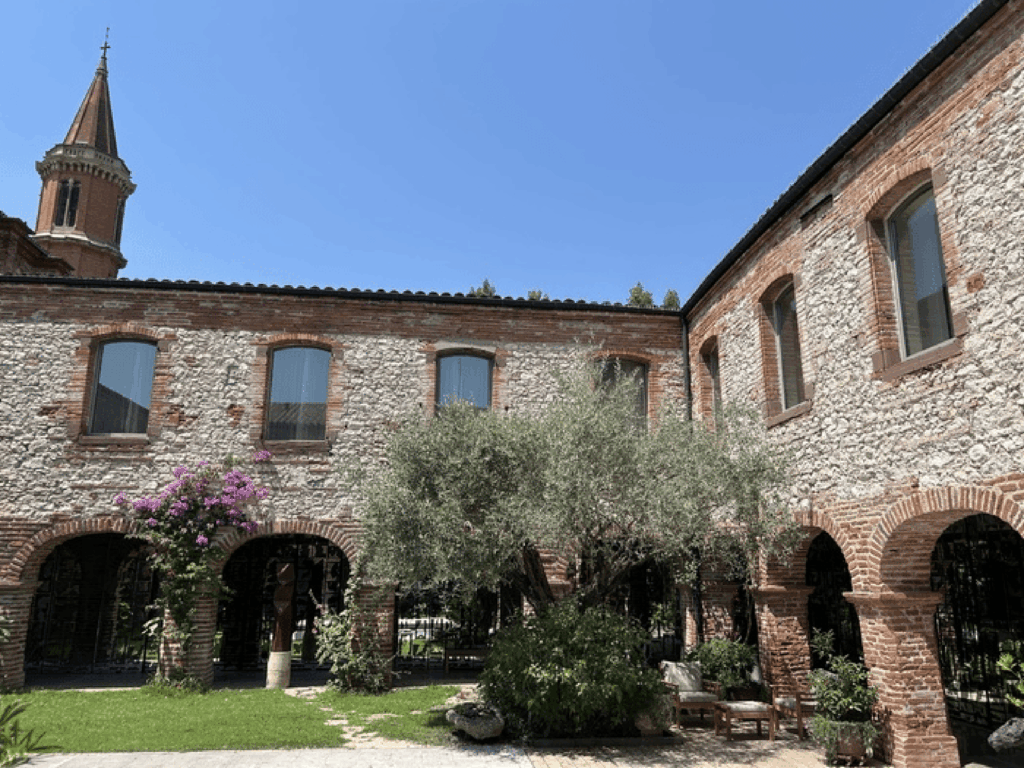
Once again, this year, Greg Kucera and Larry Yocom decided to generously open the Madeleine cloister to the public on the occasion of the European Patrimony Days. It must be said that the theme of architecture has been at the heart of the cloister for its entire life of nearly 500 years.

Of course, there is the historical use of the building as a monastic cloister, which takes its name from “clôture,” the French word for fence, to designate an enclosed space. This physical anchoring to a space corresponds to the monastic wish to live outside the temporal sphere in the context of “anachoresis“, and to live this retreat in a community as opposed to hermetism.
The cloister is a square yard surrounded by an arcade consisting of corridors and columns whose Romanesque arches are topped by modest capitals. In the center is an open space, a flourishing garden kept up by the owners. For the materials, bricks and rough stones seem to attest to a construction that took a long time to build, surely due to lack of means for this preaching order governed by vows of poverty.
The particular aesthetic of the former cloister of the Capuchin Convent is mainly due to its renovation that began in the early 2000s. We must be thankful for the work of the Toulouse firm Cardete and Huet, which has made the place a patrimony recreation, offering a new secular life engaging its religious history. The glass wall of windows that surround the cloister create a dappled reflection of the galleries. Some might also say that the shapes printed on the glass are echoes of the arches or stones of the cloister. Glass is a timeless material and its reflective character, in addition to the play of light it initiates, seems to open horizons beyond this enclosed space. It’s easy to understand how much this playfully reflective construct enhances the value of the building on the frontiers of architecture, contemporary art and poetry.
The theme of architecture also corresponds to a topical issue in the life of the Madeleine cloister. The renovation of the large exterior wall of the forecourt will take place this autumn, at the same time as the complete repair of the access staircase and its small terrace. The work on the church courtyard facade reveals a number of old openings and likely architectural connections with the original Madeleine church. On these historical points, some research with the diocesan archives is underway.
In the meantime, the public is invited to come and discover (or rediscover) the former Capuchin cloister and its transformation on Saturday 20 and Sunday 21 September 2025 from 10 a.m. to 12 p.m. and from 2 p.m. to 6 p.m. Entrance through the door of 44 ter rue de la Madeleine (forecourt side).